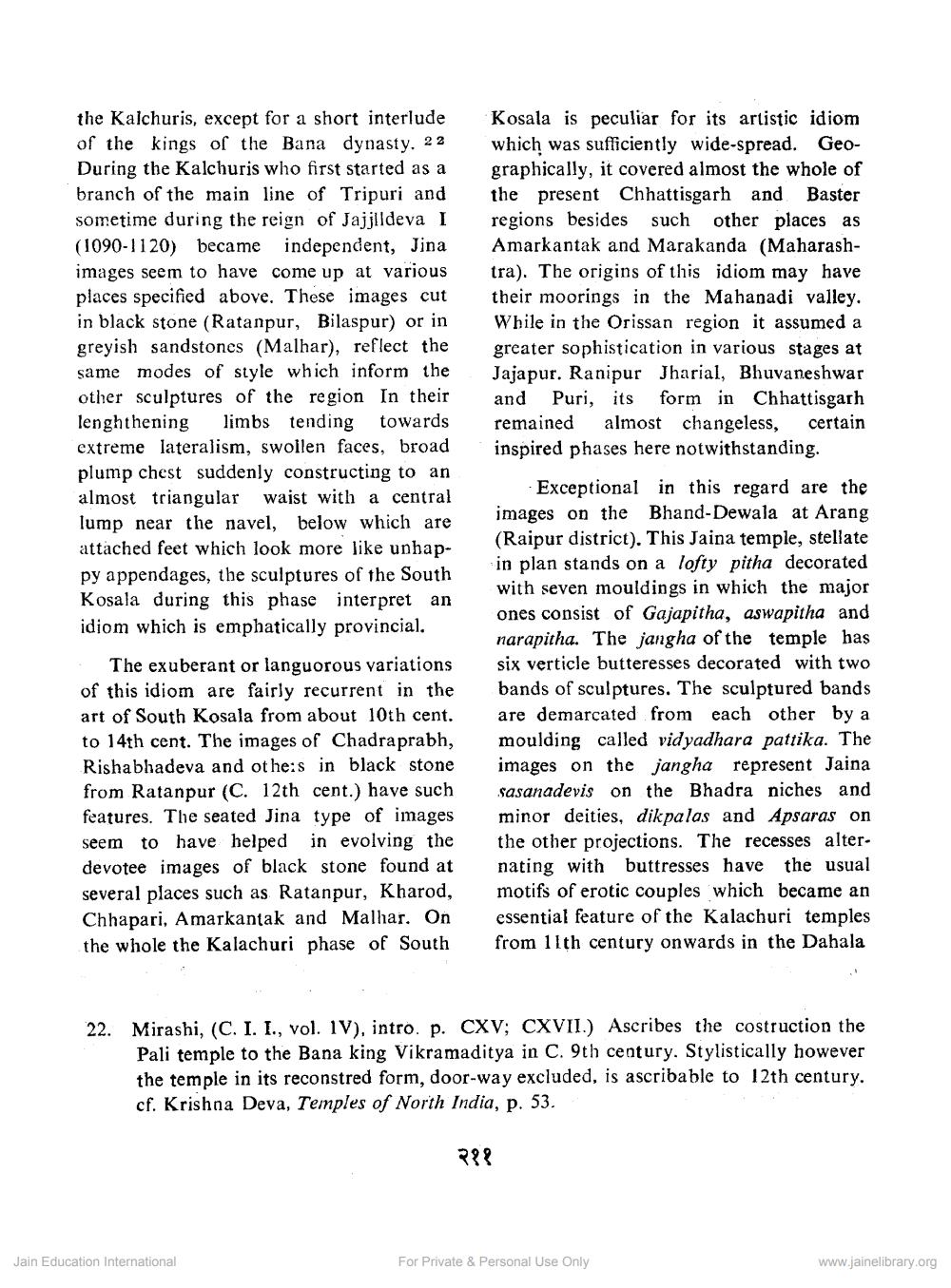________________
the Kalchuris, except for a short interlude of the kings of the Bana dynasty, 22 During the Kalchuris who first started as a branch of the main line of Tripuri and sometime during the reign of Jajjlldeva I (1090-1120) became independent, Jina images seem to have come up at various places specified above. These images cut in black stone (Ratanpur, Bilaspur) or in greyish sandstones (Malhar), reflect the same modes of style which inform the other sculptures of the region in their lenghthening limbs tending towards extreme lateralism, swollen faces, broad plump chest suddenly constructing to an almost triangular waist with a central lump near the navel, below which are attached feet which look more like unhappy appendages, the sculptures of the South Kosala during this phase interpretan idiom which is emphatically provincial.
Kosala is peculiar for its artistic idiom which was sufficiently wide-spread. Geographically, it covered almost the whole of the present Chhattisgarh and Baster regions besides such other places as Amarkantak and Marakanda (Maharashtra). The origins of this idiom may have their moorings in the Mahanadi valley. While in the Orissan region it assumed a greater sophistication in various stages at Jajapur. Ranipur Jharial, Bhuvaneshwar and Puri, its form in Chhattisgarh remained almost changeless, certain inspired phases here notwithstanding.
The exuberant or languorous variations of this idiom are fairly recurrent in the art of South Kosala from about 10th cent. to 14th cent. The images of Chadraprabh, Rishabhadeva and othe:s in black stone from Ratanpur (C. 12th cent.) have such features. The seated Jina type of images seem to have helped in evolving the devotee images of black stone found at several places such as Ratanpur, Kharod, Chhapari, Amarkantak and Malhar. On the whole the Kalachuri phase of South
Exceptional in this regard are the images on the Bhand-Dewala at Arang (Raipur district). This Jaina temple, stellate in plan stands on a lofty pitha decorated with seven mouldings in which the major ones consist of Gajapitha, aswapitha and narapitha. The jangha of the temple has six verticle butteresses decorated with two bands of sculptures. The sculptured bands are demarcated from each other by a moulding called vidyadhara pattika. The images on the jangha represent Jaina sasanadevis on the Bhadra niches and minor deities, dikpalas and Apsaras on the other projections. The recesses alternating with buttresses have the usual motifs of erotic couples which became an essential feature of the Kalachuri temples from 11th century onwards in the Dahala
22. Mirashi, (C. I. I., vol. 1V), intro. p. CXV; CXVII.) Ascribes the costruction the
Pali temple to the Bana king Vikramaditya in C. 9th century. Stylistically however the temple in its reconstred form, door-way excluded, is ascribable to 12th century. cf. Krishna Deva, Temples of North India, p. 53.
२११
Jain Education International
For Private & Personal Use Only
www.jainelibrary.org




